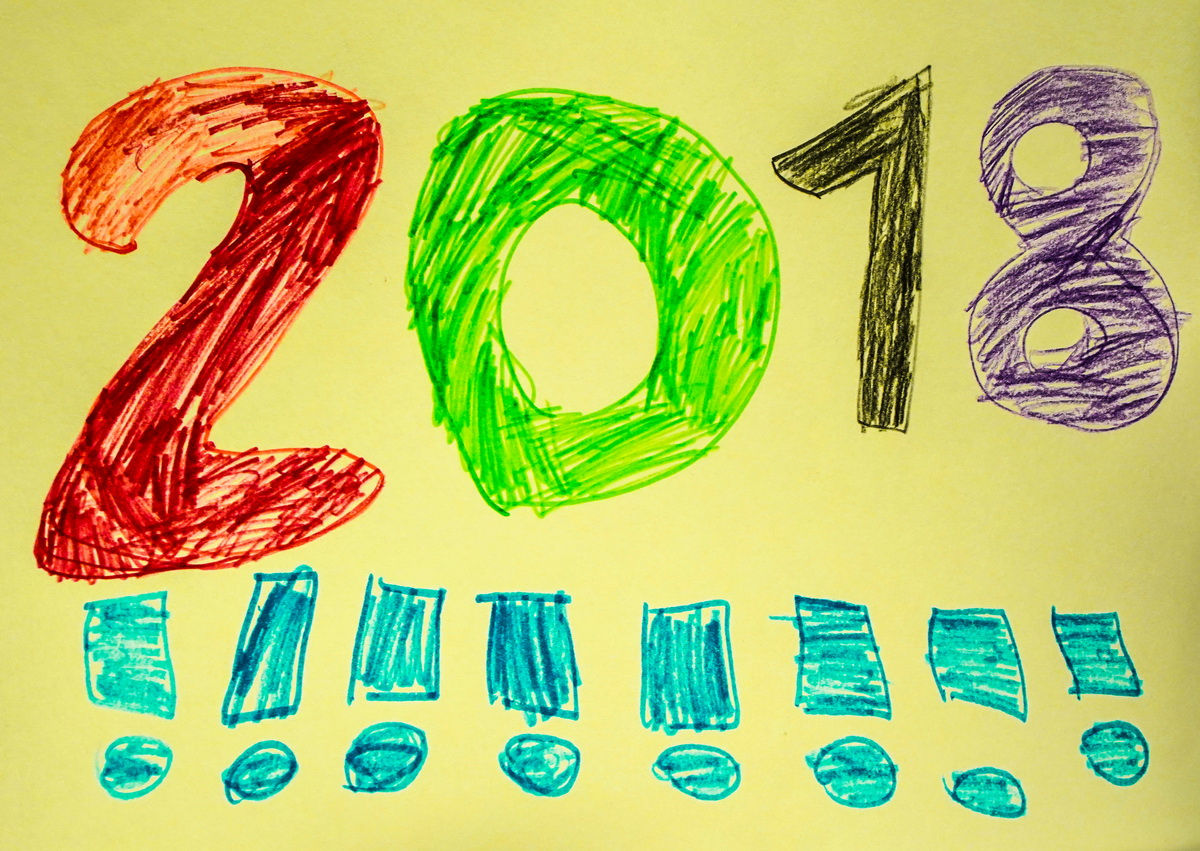Boys and girls!
December’s here again already. Over the next few weeks there’ll be the usual Christmassy-New-Year good vibes, then there’ll be the presents, fireworks, champagne, mistletoe, more champagne, and then the clock will strike midnight and we’ll have a +1 to the eternal yearly calendar. Then, for perhaps the first few weeks of January we’ll all still be saying and writing the date as day/Jan/the year 2017; oops, 2018! We all do it! I think ).

Twenty-eighteen. It has a ring to it; yes – a nice, round number. And each numeral that makes up the date is an even number… What? You’re not sure about 1? Come on! 1 is 2 to the power of zero. Kinda :). But wait! There’s more even-ness in this number: each digit of 2018 is a power of two. But what don’t you like about zero? Well, think of an artificial number, raising it to the power of which two gives zero – what, difficult? Now think of an imaginary ‘i’, the square of which gives -1. Come on: such a sexy number as 2018 is just crying out for working a sweat up about :).
Ok, ok; agreed. We won’t spoil arithmetic with all kinds of unnecessary chimeras, to the power of which each decent two turns into an empty zero. But then, as per Chinese tradition, eight means wealth! So get ready – 2018 should be blessed with prosperity; there’s no chance of avoiding it!
Sooo. It’s time to stretch and warm up for what is bound to be an infinitely interesting – and perfectly prosperous – year. So let’s get stuck into some 2018-related arithmetic. And what comes to mind first? Yes: evenness.
2018 = 2*1009
1009 is a prime number. A bit like 2017. Last year I promised that 2017 would be a simple, straightforward year. And look how in the end it turned out! Now we need to get ready for an extra-simple/straightforward year, aka – a minus plus a minus gives a plus.
What else? The sum of all the numerals in 2018 is 11: a most photogenic number from any angle, and one that’s dear to me for technical reasons: the product of all nonzero numerals = 16, which can’t not raise the spirits of any programmer on the planet.
Ok, enough. Warm-up over. Let’s move onto our already traditional New Year arithmetic exercise. Here we go…
Given figures: 10, 9, 8, 7, 6, 5, 4, 3, 2, 1. Using only ‘+’, ‘-‘, ‘*’ and ‘/’, plus ‘(…)’, all in any quantity, and also using exclusively these figures only once and only in that order… – how do you get 2018?
For example:
((10 + 9 – 8) * 7) + (6 + 5) * (4 – 3 + 2) + 1 = 111
Here we get 111. But we need to get 2018!
Marks, get set, go! Who’ll do it first to become the champ?
10 9 8 7 6 5 4 3 2 1 = 2018
Once you solve it, you go to level two: Get 2018 from the same figures minus the 10.
9 8 7 6 5 4 3 2 1 = 2018
Got it? > Level 3…:
8 7 6 5 4 3 2 1 = 2018
I managed these without a calculator – and without peeking at last year’s brainteaser – in around 20 minutes in Shanghai waiting for my flight to Moscow. My attempt at the next one was interrupted of course by the inevitable ‘turn off your devices’ nonsense on the plane, but once the ‘seatbelts fastened’ light went off, I carried on where I’d left off:
7 6 5 4 3 2 1 = 2018
This one is impossible without a factorial. I think we could allow here powers and roots too.
6 5 4 3 2 1 = 2018
Here I needed a multifactorial.
All righty. From ten figures to six: done. We’re half way there. Next up will be the second part of the brainteaser: from five and down. But we’ll save that for next time. For now, I’ve a party to get to!…
Cheers!






![YOU CAN NEVER GET TOO MANY AWARDS. SEE 1ST COMMENT FOR ENGLISH ⏩
"А из нашего окна страна Австрия видна!" - практически (с). Но в этих австриях я был не смотреть из окна, а по многочисленным деловым делам, первое из которых - лично получить несколько важных наград и множество сертификатов от независимой тестовой лаборатории AV-Comparatives.
Это далеко не первая наша награда. Скажу больше - на протяжении последних десяти лет по результатам независимых тестов к нам даже близко ни один конкурент не подобрался. Но почему тогда такое внимание конкретно к этой победе? Ответ простой: густопопсовый геополитизм. В наше весьма геополитически [очень мягко говоря] непростое время... Ну, если отбросить все казённые слова, то будет, как в известном анекдоте про поручика Ржевского. В той самой истории, когда ему указали повторить свою фразу без матерщины. На что тот ответил: "Ну, в таком случае я просто молчал".
Так вот, в наше "поручико-ржевско-молчаливое время" участвовать и получить первые места в европейских тестах - это за пределами научной и ненаучной фантастики. Что в целом совпадает с одной из основных парадигм моей жизни: "Мы делаем невозможное. Возможное сделают и без нас" (с). Большими трудами и непомерными усилиями - да! Это можно! Мы заделали такие продукты, такие технологии, такую компанию - что даже в непростое время нас и в Европах знают, уважают, любят и пользуются. Ура!](https://scontent-iad3-2.cdninstagram.com/v/t51.29350-15/430076034_1096357205018744_692310533755868388_n.heic?stp=dst-jpg&_nc_cat=103&ccb=1-7&_nc_sid=18de74&_nc_ohc=XLII-tX29aoAX80SM4u&_nc_ht=scontent-iad3-2.cdninstagram.com&edm=ANo9K5cEAAAA&oh=00_AfBINCtkZ3-r_aTvdSC36JELI05V6PuBnMWs672PK3GsBQ&oe=65E63D48)















